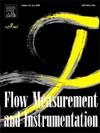Analyses of the transient turbulence flow in a 3D impeller axial pump using Novel vibration signals and Inner dynamic simulation techniques
IF 2.3
3区 工程技术
Q2 ENGINEERING, MECHANICAL
引用次数: 0
Abstract
This research examines the influence of transient flow conditions on the relative flow channel between the surrounding flow field and impeller, highlighting their contribution to pulsation phenomena and the unstable performance frequently seen in axial flow pumps. To ensure the accuracy of results, both numerical and experimental simulations were validated through physical model testing. The study primarily investigates the pressure pulsation characteristics and impeller flow field at various flow rates and blade angles (3° to −3°) with various distinct operating conditions. Findings reveal that as the flow rate decreases, the axial pump's stability diminishes, leading to heightened pressure pulsations in several regions of the flow field. Additionally, adjusting the blade angle between −3° and 3° results in increased flow instability, higher pressure pulsation levels, and more frequent rotor-stator interactions. These insights contribute to a deeper understanding of how flow dynamics and blade geometry affect the performance and stability of axial flow pumps. particularly in zones where the flow is already unstable. The highest levels of pulsations were observed in the distributor components, with a strong correlation to the blade angle amplitude of the impeller. This research provides significant insights into the underlying mechanisms of flow dynamics in axial pumps and offers a foundation for optimizing and improving pump stability and design. These findings will benefit scientists and engineers by advancing the understanding of pump flow behavior and informing future studies on axial pump turbines under various operating conditions.
求助全文
约1分钟内获得全文
求助全文
来源期刊

Flow Measurement and Instrumentation
工程技术-工程:机械
CiteScore
4.30
自引率
13.60%
发文量
123
审稿时长
6 months
期刊介绍:
Flow Measurement and Instrumentation is dedicated to disseminating the latest research results on all aspects of flow measurement, in both closed conduits and open channels. The design of flow measurement systems involves a wide variety of multidisciplinary activities including modelling the flow sensor, the fluid flow and the sensor/fluid interactions through the use of computation techniques; the development of advanced transducer systems and their associated signal processing and the laboratory and field assessment of the overall system under ideal and disturbed conditions.
FMI is the essential forum for critical information exchange, and contributions are particularly encouraged in the following areas of interest:
Modelling: the application of mathematical and computational modelling to the interaction of fluid dynamics with flowmeters, including flowmeter behaviour, improved flowmeter design and installation problems. Application of CAD/CAE techniques to flowmeter modelling are eligible.
Design and development: the detailed design of the flowmeter head and/or signal processing aspects of novel flowmeters. Emphasis is given to papers identifying new sensor configurations, multisensor flow measurement systems, non-intrusive flow metering techniques and the application of microelectronic techniques in smart or intelligent systems.
Calibration techniques: including descriptions of new or existing calibration facilities and techniques, calibration data from different flowmeter types, and calibration intercomparison data from different laboratories.
Installation effect data: dealing with the effects of non-ideal flow conditions on flowmeters. Papers combining a theoretical understanding of flowmeter behaviour with experimental work are particularly welcome.
 求助内容:
求助内容: 应助结果提醒方式:
应助结果提醒方式:


